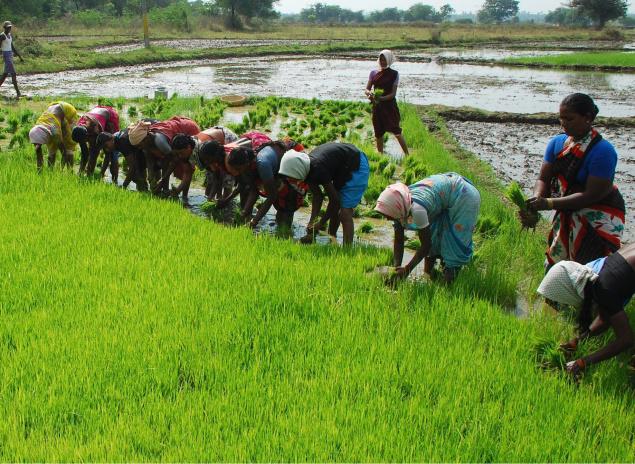Lead Author: Dr H E Shashidhar, Professor, Genetics and Plant Breeding, Department of Plant Biotechnology, College of Agriculture, University of Agricultural Sciences, GKVK, Bengaluru, Karnataka.
Co-Authors: Dr Vijayakumara Swamy, Professor and Mr Sumantha Holla, Ph.D scholar, Department of Plant Biotechnology, College of Agriculture, University of Agricultural Sciences, GKVK, Bengaluru.
BANGALORE: The modernization of Indian agriculture began in the 1950s and 1960s with the introduction of the green revolution, which ushered in technology intensive farming supported in large part by wide-spread irrigation, fertilizers and pesticides. One can draw a parallel with this and the comparative recent introduction of agri-biotechnology and GM crops about 10 year ago with Bt Cotton. Both methodologies have had a fair share of supporters and sceptics. Today our Prime Minister is promising of creating an ‘ever-green’ revolution. Yet critics and proponents of organic farming deride the benefits of the green revolution and new technologies derived through agri-biotechnology. They would have us believe that this led to debt traps, farmer suicides and farmer hunger (malnutrition) and therefore has been detrimental to India’s agriculture interests. Let’s examine this.
The Green Revolution ensured that the national agenda to produce more quantity of food and fibre, of better quality and with less resource was possible. Our granaries and warehouses are overflowing, our markets full of food produce from across India and the world. From a net food importing nation, we have become exporters. Coffee, Rice, Cotton, Rubber and many more agri commodities are exported and helps earn valuable foreign exchange. Thanks to the hard-working farmers, agri-scientists, policy support and infrastructure. Also, political stability and economic liberalisation.
We will all agree that availability of food is no longer in question. Affordability of food is however another question altogether. The Wholesale Price Index of January 2016 shows a12% inflation for fruits and vegetables and a shocking 44% inflation for pulses. And traditionally winters are when food availability is more and at cheaper prices. Malnutrition also remains an issue; a badly kept secret that continues to weigh heavily on our national conscience. Making a distinction between accessibility and availability the first myth that needs correctionis that “the poor and vulnerable are dying for lack of food”. There could be nothing further from the truth. It’s not “lack of food,” it’s about their ‘lack of access to food.’ The emergence of hidden hunger among the poorcannot be ascribed to the lack of availability of food. Instead of questioning scientific intent & trying to limit scientific progress, the call of the hour is that of affirmative action to address this problem.
Assessing the ground situation
Farmer hunger has many causes but the most telling is this statistic: India’s total land under cultivation has remained fixed at 140-150 million hectares for over 40 years, but the number of farmers trying to make a living from farming has doubled. We are adding one crore additional farmers every five years – a demographic gift rather than a dividend. The average size of an Indian farm holding has fallen from two hectares to 1.15 between 1976 and now, and it is falling further.Indian agriculture is no longer competitive. It just cannot support itself. Lack of irrigation, limited farm technology and climate change have been detrimental to farm output. Farm wastage, the lack of cold-chains, and the damage done by minimum support prices has aggravated matters further. To attribute the ills of Indian agriculture to farm technology (of all things) disregards real socio-economic issues. Is this linked to the green revolution? Absolutely no.
Clearing air on misconceptions
The Green revolution was never about promoting so called ‘chemical agriculture.’ It was an improvement over traditional agriculture and was designed to ensure better returns on investment for the farmer (linked to the greater good of ensuring food sufficiency for a hungry nation – which incidentally it did). The Green revolution allowed farmers to become professionals, as they could now predict their yields given a new found ability to follow a recommended package of practices. At the same time it did not exclude the applications of organic manure. It advocated the use of organic manure and strongly advocated crop rotation, mixed and inter-cropping. Hence, linking the green revolution with an overdose of chemical poisoning is not just inappropriate but also a misleading exaggeration of its intentions. As is the foolish attempt to convince India that organic agriculture can completely replace modern agriculture and wipe out poverty and hunger.
This article is part of our relentless campaign to provide platform for divergent viewpoints on burning issues. We would like to clarify that the views expressed by the authors are personal.

































































